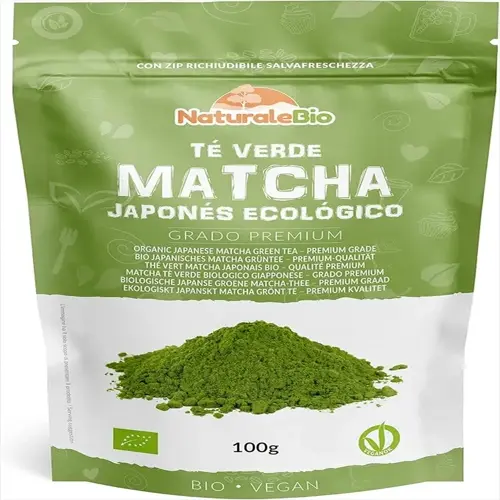10 Lemon Balm Uses: More Than You Knew!

Written by
Thomas Wilson
Reviewed by
Prof. Benjamin Murphy, Ph.D.Lemon balm can be successfully employed in herbal teas and natural treatments for the skin as well.
Lemon balm grows well in partial shade with moist, well-draining soil.
Lemon balm can also be preserved by drying, freezing, or infusing oils for year-round use.
Fresh lemon balm makes a great addition to salads and seafood dishes.
Topical application of lemon balm is effective for cold sores, insect bites, and acne.
Use lemon balm safely if you follow the dosage guidelines and avoid drug interactions.
Article Navigation
A look at how to use lemon balm finds a realm of possibilities in this gentle herb. I first grew it in my herb garden for its lovely lemon scent. You will see that it belongs to the mint family. Its heart-shaped leaves permit the fragrance to escape when rubbed. This plant comes from the Mediterranean regions. It has been valued for over two thousand years.
This Foundation in nutrition gives you over 10 ways to use lemon balm today. You can use it in teas, meals, and skincare routines. A great way to begin using lemon balm is with fresh leaves in evening infusions (teas). Lemon balm certainly offers wellness support, not cures for health problems. Please consult a healthcare professional before using lemon balm, especially if you have any underlying health issues.
It is very much the same when living with herbs. I teach my students to respect dosages. If herbs are to be taken in conjunction with medication, it is wise to consult a qualified herbalist. Herbs work best within the framework of a balanced lifestyle. Allow me to show you how to incorporate them into your life.
Gardening and Preservation Tips
Lemon balm offers pleasure in growing it due to its versatility. It can be grown in partial shade or in most soil mediums. All of mine are in well-drained situations within easy access of my kitchen. The leaves for their oil yield should be picked just before the flowers bloom; at this time, you can capture the full strength of their lemon fragrance.
Protecting your crops helps them retain their bright flavor all year. For teas, I like drying bundles hanging upside down. Freezing chopped leaves in ice cubes helps keep them fresh-tasting. Each method serves its purpose in your kitchen. Dried items last longer, and frozen items retain their freshness.
This herb repels garden pests while also helping pollinators. Crush the leaves and rub them on your skin to repel mosquitoes. White flowers attract beneficial bees to your garden. I plant extra patches around vegetable beds for protection. With this plant, you create a balanced ecosystem with one addition.
Keep in mind that lemon balm is quite vigorous and will spread like any other mint. I grow mine in large pots so that I can control its spread. The harvest is continuous from early summer to fall. Ice trimming plants back encourages bushier growth and has a more vigorous leaf production. This hardy and productive herb is a delight.
Drying
- Step: Harvest stems before flowering for peak oil content
- Method: Bundle 5-10 stems with twine; hang upside down in dark, ventilated area for 7-14 days
- Storage: Remove leaves; store in airtight containers away from light for up to 1 year
Freezing
- Option 1: Chop leaves finely; pack into ice cube trays filled with water or olive oil
- Option 2: Spread whole leaves on baking sheet; freeze for 2 hours before transferring to bags
- Use: Retains fresh flavor for 6 months; ideal for teas and cooking
Infusing
- Oil: Pack dried leaves in jar; cover with olive/coconut oil. Steep 4 weeks; strain
- Honey/Vinegar: Fill jar with fresh leaves; cover with liquid. Steep 3-4 weeks; strain
- Shelf Life: 9-12 months in cool, dark storage
Oil Infusing
- Preparation: Pack dried leaves in jar; cover with olive/coconut oil
- Process: Steep 4 weeks in cool dark place; strain through cheesecloth
- Shelf Life: 9-12 months; use for skin remedies and lip balms
Refrigeration
- Method: Wrap fresh stems in damp paper towel; place in plastic bag
- Duration: Keeps leaves crisp for 7-10 days
- Tip: Ideal for immediate culinary use in salads and beverages
Vinegar Infusing
- Preparation: Fill jar with fresh leaves; cover with apple cider vinegar
- Process: Steep 3-4 weeks; strain and bottle
- Uses: Salad dressings, hair rinses, or bath additives
Culinary Creations
Lemon balm imparts an elusive citrus flavor to dishes without masking other tastes. Unlike the heavier herb, rosemary, its delicate lemon perfume emphasizes rather than predominates. During the summer, I enjoy adding fresh leaves to salads to enhance their freshness. The mild flavor matches exquisitely with delicate ingredients.
For the best results when preparing uncooked dishes, use fresh leaves. Leaves that are chopped and bruised just before being served will give off their essential oils. I put them into dressings of yogurt and fruit salads just before eating them. They will maintain their fresh color and fragrance, which you desire.
Lemon balm's fine flavor vanishes quickly in heated dishes, so add the chopped leaves in the last two minutes of cooking. This is especially good with chicken piccata or fillets of fish, served to enhance the fine flavor. The leaves become tender without losing their citrus flavor.
Find wonderful combinations where lemon balm's ability to blend carries it off well. It harmonizes with honey in the tea, with chicken in the main dish, and with berries in desserts. My favorite is lemon balm ice cream topped with raspberry sauce. Experiment and find your signature use of this culinary herb.
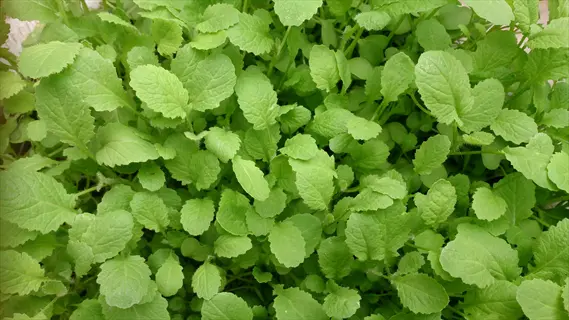
Fresh Salads
- Preparation: Finely chop 2 tablespoons of fresh leaves per serving; gently toss with mixed greens and seasonal vegetables
- Flavor Pairing: Complements strawberries, goat cheese, and light vinaigrette dressings beautifully
- Tip: Incorporate leaves just before serving to maintain their bright citrus notes and delicate texture
- Recipe Idea: Refreshing watermelon salad with feta crumbles and lemon balm garnish
- Texture Note: Softer than mint leaves; won't overwhelm delicate salad ingredients
- Nutrition: Provides antioxidants and subtle flavor without significantly altering calorie content
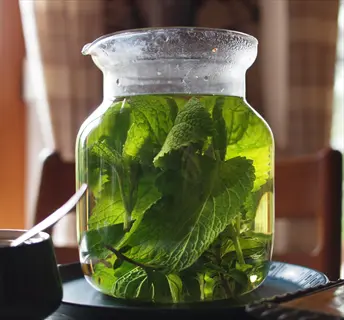
Herbal Teas
- Brewing: Steep 1 tablespoon fresh leaves in 8 ounces (237 milliliters) of freshly boiled water
- Timing: Allow infusion for 5-7 minutes to extract maximum flavor and beneficial compounds
- Blending: Combine with chamomile flowers or mint leaves for complex herbal flavor profiles
- Serving: Enjoy hot during cool weather or iced with lemon slices in summer
- Storage: Refrigerate leftover tea in sealed containers for up to three days maximum
- Variation: Prepare sun tea by steeping leaves in cold water under sunlight for milder infusion
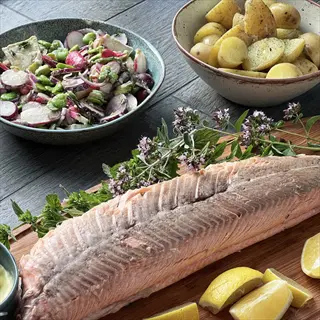
Fish Dishes
- Application: Place whole leaves under salmon skin before baking or grilling fillets to infuse delicate citrus essence
- Timing: Add during final 2 minutes of cooking to preserve essential oils and maximize aromatic impact
- Pairing: Matches exceptionally well with dill, capers, and rich lemon-butter sauce preparations
- Quantity: Use approximately 5-6 medium-sized leaves per 6-ounce (170-gram) fish portion
- Technique: Create crispy herb crust by mixing with panko breadcrumbs and fresh lemon zest
- Alternative: Blend finely chopped leaves into tartar sauce for fish sandwiches and seafood dishes

Poultry Seasoning
- Marinade: Chop leaves with olive oil, garlic, and pepper; coat chicken pieces thoroughly before cooking
- Roasting: Tuck fresh sprigs inside cavity of whole birds before oven roasting or grilling
- Sauce: Simmer leaves in pan drippings to create citrus-infused gravy for serving with roasted meats
- Quantity: Use 1/4 cup chopped leaves per 3 pounds (1.4 kg) of poultry meat for balanced flavor
- Storage Tip: Freeze herb-infused butter portions for future quick seasoning needs and convenience
- Safety: Always cook poultry to minimum internal temperature of 165°F (74°C) for food safety
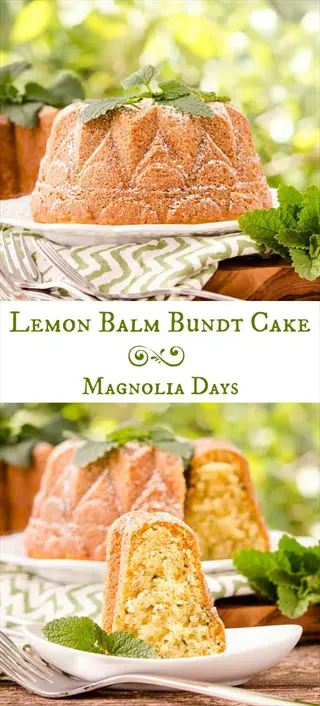
Dessert Garnish
- Presentation: Float fresh small leaves on panna cotta, custards, or fruit salads for elegant touch
- Candying: Dip leaves in egg white and fine sugar; air-dry overnight for sparkling edible decoration
- Pairing: Enhances lemon cakes, berry compotes, and citrus-flavored sorbets beautifully without overpowering
- Infusion: Steep in heavy cream before making ice cream or mousse dessert bases for subtle flavor
- Decoration: Create edible arrangements combining with edible flowers and fresh fruit slices
- Quantity: Use 2-3 small leaves per individual dessert serving for optimal subtle flavor impact
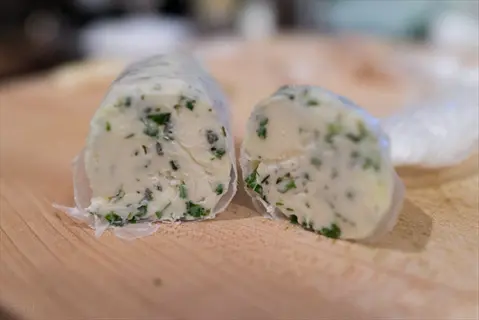
Herbal Butters
- Ratio: Blend 2 tablespoons finely chopped leaves per 4 ounces (113 grams) softened unsalted butter
- Method: Combine at room temperature using fork or mixer for even herb distribution throughout
- Uses: Spread on artisan breads, melt over steamed vegetables, or baste grilled meats before serving
- Storage: Roll into log shape using parchment paper; refrigerate up to one week maximum
- Freezing: Keeps well for three months; slice frozen portions as needed for cooking convenience
- Flavor Tip: Add lemon zest and flaky sea salt for enhanced citrus brightness and texture
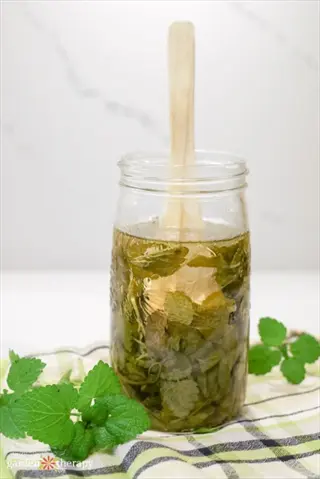
Infused Vinegars
- Preparation: Pack clean glass jar with fresh leaves; completely cover with quality white wine vinegar
- Timing: Steep mixture 3-4 weeks in dark cupboard before straining through fine cheesecloth
- Uses: Create vibrant salad dressings, flavorful meat marinades, or tangy vegetable pickling solutions
- Shelf Life: Maintains quality 6-8 months when stored in cool dark location away from sunlight
- Ratio: Use 1 cup packed fresh leaves per 2 cups (473 milliliters) vinegar for proper infusion
- Safety: Ensure vinegar acidity level is 5% or higher for effective preservation and food safety
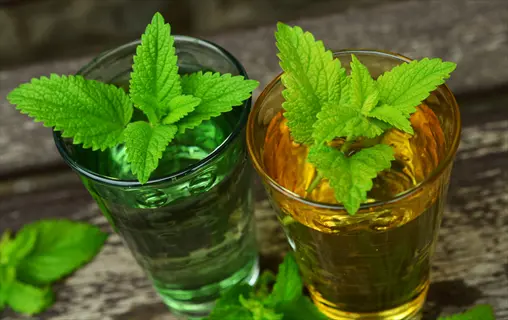
Cocktail Mixer
- Muddling: Gently bruise 4-5 fresh leaves in cocktail shaker to release aromatic oils before mixing
- Garnish: Float whole leaves as attractive garnish on gin tonics or vodka spritzers for visual appeal
- Syrup: Simmer leaves with equal parts sugar and water for versatile herbal sweet mixer base
- Pairing: Complements citrus-based cocktails and floral liqueurs exceptionally well in mixed drinks
- Quantity: Incorporate approximately 1 tablespoon chopped leaves per cocktail serving for balance
- Tip: Freeze into decorative ice cubes for attractive slow-melting infusion in summer beverages
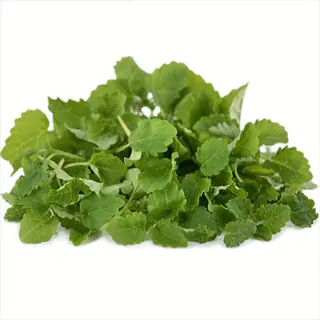
Vegetable Dishes
- Roasting: Toss chopped leaves with zucchini, asparagus, or root vegetables before oven cooking
- Steaming: Place whole sprigs in steaming basket alongside green beans or broccoli florets
- Grilling: Brush herb-infused oil on vegetable skewers before char-grilling for smoky flavor
- Quantity: Use 3 tablespoons per ≈4 cups (600 g) vegetable portion for noticeable citrus notes
- Pairing: Matches exceptionally well with roasted garlic, olive oil, and grated Parmesan cheese
- Timing: Incorporate during final 5 minutes of cooking to prevent burning delicate leaves
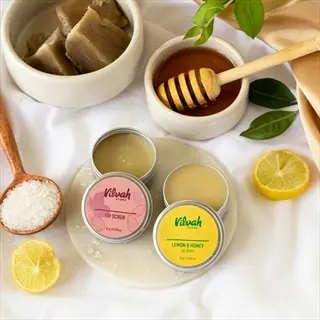
Herbal Honey
- Method: Layer clean, dry leaves with raw honey in sterilized glass jar ensuring complete coverage
- Timing: Allow infusion 4-6 weeks before straining out solid plant material for pure flavor
- Uses: Natural sweetener for teas, yogurt parfaits, or drizzling over artisan cheese plates
- Shelf Life: Maintains quality 1 year due to honey's natural preservation properties when stored properly
- Ratio: Combine 1/2 cup packed leaves with 16 ounces (473 milliliters) honey for balanced infusion
- Caution: Not suitable for infants under 12 months due to potential botulism risk from spores
Natural Skin Solutions
Lemon balm has impressive, antiviral and anti-inflammatory effects in skin care. I have seen it clear up cold sores and reduce the inflammation of insect bites. The anti-irritants act at the source of the irritation. Apply the formula properly to get good results.
Careful *dilution ratios* of essential oils are fundamental to avoid reactions. I use 5 drops to 1 tablespoon of jojoba or another carrier oil, creating an approximate concentration of 1-2% which is perfectly safe. Try applying a smaller area of skin to see if there is any reaction before using it on a wider area of the body.
Fresh Leaves are applied differently from oils. Crush fresh leaves right on the bug bites for instant relief. Use infused oils for the more long-lasting treatments, such as acne care. Personally, I choose fresh for more instant fixes and oils for routine treatments.
IMPORTANT SAFETY PRECAUTIONS: If you have sensitive skin, take extreme care. Do not use in or near the eye area, or broken skin. Discontinue use if stinging is noted. If thyroid problems exist, be sure to consult with your physician first. Protect your skin while enjoying the natural remedies.
Cold Sore Treatment
- Mechanism: Citral and rosmarinic acid inhibit Herpes simplex virus replication at cellular level
- Application: Apply diluted oil (1:4 ratio with coconut oil) 3x daily using cotton swab
- Effectiveness: May reduce healing duration compared to untreated outbreaks
- Preparation: Use oil infused for 4+ weeks; strain through cheesecloth before use
- Safety: Discontinue if stinging occurs; avoid eye and mucous membrane contact
- Tip: Combine with zinc oxide cream for enhanced barrier protection during outbreaks
Insect Bite Relief
- Anti-inflammatory Action: Eugenol reduces histamine response and localized swelling significantly
- Fresh Method: Crush 2-3 leaves; rub directly on bite for immediate cooling effect
- Compress: Soak cloth in chilled tea (steeped 15 minutes); apply for 10-minute intervals
- Oil Blend: Mix 5 drops oil with 1 tbsp aloe vera gel for soothing balm
- Effectiveness: Reduces itching within minutes; repeat every 2 hours as needed
- Prevention: Rub fresh leaves on exposed skin as natural mosquito deterrent
Acne Management
- Antibacterial Properties: Targets Cutibacterium acnes bacteria without drying skin excessively
- Spot Treatment: Dab tea-infused clay paste (1:1 ratio) on blemishes overnight
- Toner: Brew strong tea; mix with witch hazel (3:1); apply with cotton pad
- Frequency: Use 2x daily for active breakouts; reduce to maintenance 3x weekly
- Precaution: Always patch test first; may increase photosensitivity in fair skin
- Enhancement: Add 2 drops tea tree oil per ounce for synergistic antimicrobial effect
Eczema Soothing
- Anti-itch Action: Polyphenols calm neurogenic itching pathways within minutes
- Bath Soak: Steep 1 cup dried leaves in boiling water; add to lukewarm bath
- Cream Base: Blend infused oil with shea butter (1:3 ratio) for moisturizing balm
- Application: Apply thin layer to affected areas after showering while skin damp
- Frequency: Use up to 3x daily during flare-ups; maintain hydration barrier
- Caution: Discontinue if redness increases; consult dermatologist for persistent cases
Sunburn Recovery
- Cooling Effect: Menthol-like compounds provide immediate sensory relief upon application
- Compress: Soak cloth in chilled tea (brew 2 tbsp leaves per cup); drape on skin
- Gel Formula: Combine infused oil with aloe vera gel (1:5 ratio); refrigerate before use
- Healing Boost: Antioxidants reduce oxidative damage from UV radiation exposure
- Application: Reapply every 2 hours during first 48 hours post-sun exposure
- Warning: Not a substitute for sunscreen; use SPF 30+ for prevention always
Relaxation and Sleep Support
Lemon balm supports relaxation naturally by acting on your nervous system. Compounds in the herb help enhance GABA activity. This soothing neurotransmitter reduces racing thoughts and tension. I have used it for years as a transition from busy days to restful evenings.
Select formats that are aligned with your needs and preferences. Teas offer a warm ritual that is ideal for the evening wind-down. Non-alcoholic tinctures provide concentrated support for the moments of tension. Essential oil diffusions create a soothing atmosphere through the use of aromatic pathways. All of these offer benefits in unique ways.
Timing is crucial to achieving optimal sleep support. Drink the teas 60 minutes before bed. This allows the compounds to activate as you prepare for rest. Use the diffusers 30 minutes before going to bed. You help to generate a sense of consistency for the body. Touching on natural circadian rhythms.
Dosages must be modified with care in the different age groups. Adults can take standard tea or tincture doses as needed. Children require dilute preparations, or their strength should be half that of the original. Essential oils should be omitted entirely in young children. I tell parents to start with mild infusions.
Evening Tea Ritual
- Preparation: Steep 1 tbsp fresh leaves in 8 oz boiling water for 7-10 minutes
- Timing: Drink 30-60 minutes before bedtime for optimal relaxation effect
- Enhancement: Add chamomile or passionflower for synergistic calming properties
- Dosage: Limit to 1-2 cups nightly; excessive intake may cause next-day drowsiness
- Mechanism: Compounds increase GABA activity, reducing nervous system excitability
- Tip: Use freshly harvested leaves before flowering for maximum potency
Alcohol-Free Tincture
- Formulation: Glycerin-based tincture (glycerite) made with 3:1 vegetable glycerin to water ratio
- Usage: Take 1 teaspoon (5 ml) directly or mixed in warm beverage
- Benefit: Ideal for children or alcohol-sensitive individuals before bedtime
- Preparation: Steep fresh leaves 4-6 weeks in cool dark location
- Shelf Life: 1 year when stored in amber glass away from light
- Dosage: Start with 1/2 teaspoon for kids; adjust based on response
Aromatherapy Diffusion
- Method: Add 3-5 drops essential oil to water-based diffuser at bedtime
- Duration: Run for 30-60 minutes in well-ventilated bedroom space
- Blending: Combine with lavender or bergamot oils for enhanced effect
- Mechanism: Inhalation stimulates olfactory pathways linked to calmness
- Safety: Ensure proper dilution; never apply undiluted oil to skin
- Alternative: Place dried sachets under pillow for all-night subtle aroma
Bath Soak Preparation
- Infusion: Steep ½ cup dried leaves in 4 cups boiling water for 20 minutes
- Application: Add strained liquid to warm bath (100°F/38°C max temperature)
- Enhancement: Include Epsom salts (2 cups) for magnesium absorption boost
- Duration: Soak 20-30 minutes before bed to lower core body temperature
- Frequency: Use 2-3 times weekly during high-stress periods as needed
- Caution: Avoid if pregnant; test skin sensitivity before full immersion
Sleep Support Blend
- Formula: Mix dried lemon balm (50%), chamomile (30%), skullcap (20%)
- Usage: Fill reusable tea bags or make loose-leaf infusion before bed
- Dosing: Use 1 tbsp blend per 8 oz water; steep covered 10 minutes
- Synergy: Combines lemon balm's GABA support with chamomile's apigenin
- Storage: Keep in airtight container away from light for 6-month freshness
- Timing: Consume 30 minutes before lying down to allow digestion time
Safety and Proper Usage
Thyroid medication interactions are significant to note with lemon balm. It may interfere with the effectiveness of hormone replacement medications. I remind my clients who are on levothyroxine therapy to be careful about monitoring levels. Pregnant and lactating people should avoid lemon balm. There is not enough safety data for either of these groups.
There are great differences in the doses for adults and children. Adults may commonly use the usual doses of 2-4 ml tinctures. For children, the preparations must be reduced in strength, and the dose is less than half or more. Essential oils should be avoided entirely in doses for those under 12 years of age. I have a wonderful range of special dilutions for younger users.
Always consult healthcare professionals before starting herbal procedures. This is particularly important in the presence of existing medical conditions. Conditions such as diabetes, hypertension, or immunologic disorders need professional supervision. Disclose all supplements you are taking during medication reviews. Safety and health should take precedence over convenience.
Other precautions protect everyone taking lemon balm. Discontinue usage at least two weeks before a scheduled surgery. Monitor for drowsiness when using sedatives. Log any odd reactions immediately. Proper use enables you to enjoy the benefits in a responsible manner fully.
Medical Conditions
- Thyroid Issues: May interfere with hormone replacement therapy; requires physician monitoring
- Surgery: Discontinue 2 weeks pre-operation due to sedative interaction risks
- Glaucoma: Avoid use as it may increase intraocular pressure in susceptible individuals
- Pregnancy/Breastfeeding: Insufficient safety data; err on side of avoidance
- Chronic Illnesses: Consult doctor before use if diabetic, hypertensive, or immunocompromised
- Children: Limited to tea/tincture forms; avoid essential oils under age 12
Medication Interactions
- Sedatives: May amplify effects of benzodiazepines, barbiturates, and sleep medications
- Thyroid Drugs: Can reduce effectiveness of levothyroxine and similar medications
- HIV Medication: Potential interference with antiretroviral therapy absorption
- Blood Thinners: Theoretical risk with warfarin; requires INR monitoring if combined
- Serotonergic Drugs: Possible serotonin syndrome with SSRIs/SNRIs (rare but documented)
- Always: Disclose all supplements to healthcare providers during medication reviews
Proper Dosage
- Tea: Maximum 3 cups daily (1 tbsp fresh leaves per 8 oz [237 ml] water)
- Tincture: Adults: 2-4 ml daily; Children: 0.5-1 ml (age 6+ only)
- Capsules: Do not exceed 500 mg daily without professional guidance
- Essential Oil: Never ingest; topical use at 1-2% dilution maximum
- Duration: Limit continuous use to 6 months; take 2-week breaks periodically
- Overdose Signs: Nausea, dizziness, abdominal pain, discontinue immediately
Side Effects
- Common: Headache, increased appetite, mild digestive discomfort
- Skin Reactions: Rash or irritation with topical use (do patch test first)
- Hormonal: Possible thyroid function changes with long-term high doses
- Neurological: Drowsiness if combined with sedatives; avoid driving
- Allergic Reactions: Rare but possible, discontinue if swelling/breathing difficulty occurs
- Reporting: Document any adverse effects for healthcare provider review
Quality & Sourcing
- Certification: Choose products with USP or NSF International verification
- Fresh vs. Dried: Fresh leaves ideal for teas; dried for capsules/tinctures
- Storage: Keep in dark glass away from heat/light to preserve potency
- Adulteration Risk: Avoid products with unspecified 'proprietary blends'
- Organic Preference: Reduces pesticide exposure risk in concentrated forms
- Expiration: Discard supplements after 2 years; dried leaves after 1 year
5 Common Myths
Lemon balm may treat depression and anxiety disorders without other medications.
Some individuals who take lemon balm may find it helps mild depression or anxiety due to its ability to modulate GABA, but lemon balm cannot cure depression or anxiety. These require a full course of mental health treatment involving professional evaluation, therapy, and possibly medication. Rosmarinic acid in the herb may impact responses to stress temporarily, but chronic depression and anxiety require medical oversight. Always check with your mental health professionals before changing your treatment schedule.
Unrestricted intake of lemon balm daily is safe with no side effects.
The risks of abusing excessive lemon balm intake are thyroid dysfunction, interference with certain medications, and drowsiness the next day. The scientific evidence shows that a safe maximum of lemon balm is 500 mg per day in capsule dosage form or 3 cups of tea for up to six months of continuous use. Using lemon balm in overdoses, over a long term, may lead to gastro-intestinal difficulties and dizziness, as well as changes in appetite. Adhere to prescribed dosages, and take periodic vacations from the herb in order to prevent tolerance build-up.
Essential oils are safe to ingest since they come from natural plant sources.
Ingesting lemon balm essential oil risks severe mucosal damage, hepatotoxicity, and drug interactions due to concentrated compounds like citral. Unlike culinary herbs, essential oils lack water-soluble buffers and can burn digestive tissues. Topical use requires dilution to 1-2% in carrier oils. For internal benefits, choose teas or glycerites instead of undiluted oils.
Lemon balm works equally well for all applications whether fresh or dried.
Fresh leaves excel in culinary and topical uses where volatile oils matter, while dried leaves suit teas and capsules. Research shows fresh preparations retain 30% more antiviral citral but degrade faster. Dried leaves maintain rosmarinic acid better for long-term storage. Match form to purpose: fresh for cold sores, dried for sleep teas.
When lemon balm is applied to the skin, it protects from all insect bites and diseases.
Citral has been demonstrated to have moderate mosquito-repelling properties, but there is no proof that lemon balm protects against diseases transmitted by ticks or mosquitoes, including Zika. The length of effectiveness after applying lemon balm is only 30 to 60 minutes, which is even less than DEET-based repellents. In locations where an epidemic disease may possibly occur, use EPA-approved repellents. Lemon balm should only be used to soothe the skin after exposure has already been established.
Conclusion
Lemon balm is a rather versatile herb to use in your everyday life. It can be used in cooking, for wellness purposes, or in natural remedies. I have used it in my kitchen for decades, as well as in my medicine cabinet and garden. This herb is flexible for one.
Safety is the foundation of all herbal traditions. All my students learn to give respect in proper doses. Health conditions should be evaluated by a professional opinion. Such a procedure will protect you and your dear ones. Their treatment lies with you. So judge wisely.
Sustainable cultivation allows lemon balm to remain available for future generations. I continue to cultivate and save seeds each season organically. Growing lemon balm is easy and supports your local ecosystem. It helps sustainably preserve our botanical heritage.
Add lemon balm gradually to your daily habits. Try it first in evening teas or fresh leaves used in salads. Watch it develop its gifts for varied areas of your day. Such a gentle herb does allow avenues of development. Discover a deeper and deeper friendship with it that utilizes its most preferred hemisphere in your individual case.
External Sources
Frequently Asked Questions
What are the main uses of lemon balm?
Lemon balm has versatile applications across culinary, wellness, and medicinal areas:
- Culinary: Flavoring teas, salads, fish dishes, and desserts
- Wellness: Promoting relaxation and sleep support
- Topical: Treating cold sores, insect bites, and acne
- Preservation: Drying, freezing, or infusing in oils/vinegars
Can I consume lemon balm daily?
Moderate daily consumption is generally safe but follow these guidelines:
- Limit to 3 cups of tea or equivalent extracts daily
- Avoid continuous use beyond 6 months without breaks
- Consult a doctor if taking thyroid/sedative medications
- Reduce dosage for children and elderly individuals
How do I make lemon balm tea?
For optimal flavor and benefits when preparing lemon balm tea:
- Use 1 tablespoon fresh leaves per 8 ounces of water
- Steep in freshly boiled water for 7-10 minutes
- Drink 30-60 minutes before bedtime for relaxation
- Combine with chamomile or passionflower for enhanced effects
Does lemon balm help with sleep?
Yes, lemon balm supports sleep through multiple mechanisms:
- Increases GABA activity to calm nervous system excitability
- Lowers core body temperature when used in evening baths
- Reduces anxiety and racing thoughts before bedtime
- Works synergistically with sleep-promoting herbs like chamomile
What medications interact with lemon balm?
Important medication interactions to be aware of include:
- Thyroid medications: May reduce effectiveness
- Sedatives: Can amplify drowsiness effects dangerously
- Blood thinners: Potential interference with anticoagulants
- HIV medications: May affect absorption rates
- Always disclose supplement use to healthcare providers
Is lemon balm safe for skin applications?
Topical use requires careful consideration of these safety aspects:
- Dilute essential oils to 1-2% concentration maximum
- Perform patch tests before full application
- Avoid use on broken skin or near mucous membranes
- Discontinue immediately if stinging or rash occurs
- Not suitable for glaucoma patients due to pressure risks
Can lemon balm help with weight loss?
While not a weight loss solution, lemon balm may indirectly support metabolism:
- Reduces stress-induced cravings through calming effects
- May mildly boost digestion when used in teas
- Provides low-calorie flavoring alternative to sugary additives
- Never replaces proper diet/exercise for weight management
What's better - fresh or dried lemon balm?
Choose based on intended application for optimal results:
- Fresh: Best for culinary uses and topical applications
- Dried: Ideal for teas and long-term storage needs
- Essential oils: Most concentrated for aromatherapy uses
- Preserved forms: Frozen or infused options for year-round availability
How should I store lemon balm?
Proper preservation methods maintain potency and safety:
- Fresh: Refrigerate wrapped in damp towel for 7-10 days
- Dried: Store in airtight containers away from light
- Frozen: Blanch leaves before freezing in portions
- Infused oils: Use dark glass bottles in cool locations
- Discard supplements after expiration dates
Who should avoid lemon balm?
Contraindications exist for these specific groups:
- Pregnant or breastfeeding women due to insufficient safety data
- Individuals with thyroid conditions without medical supervision
- Children under 6 (except mild teas with pediatrician approval)
- Those scheduled for surgery within two weeks
- People taking serotonergic medications like SSRIs/SNRIs
